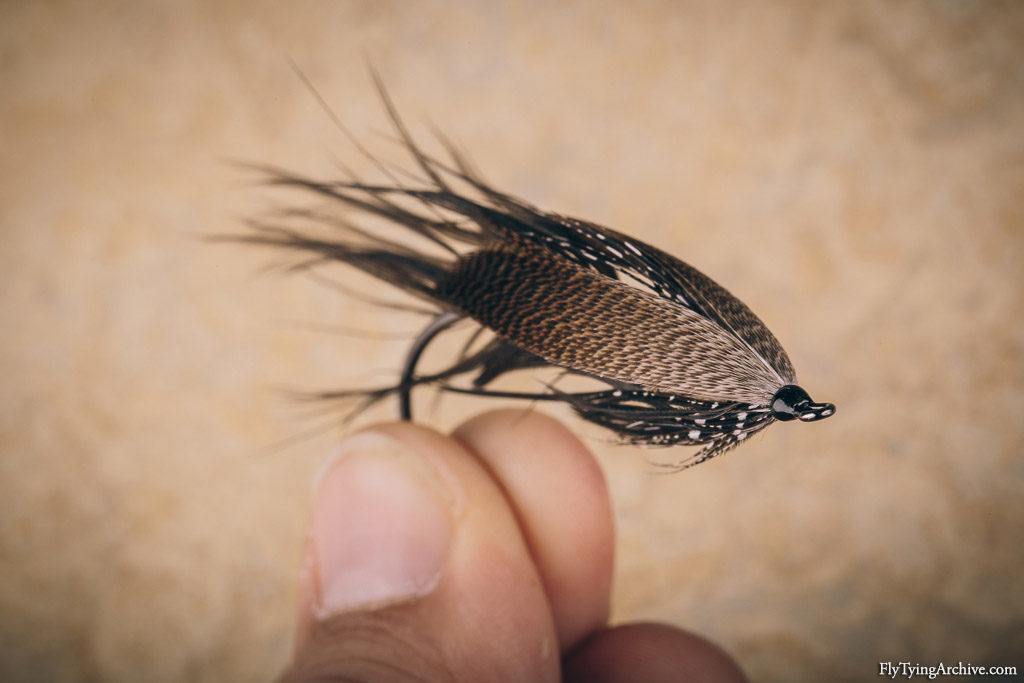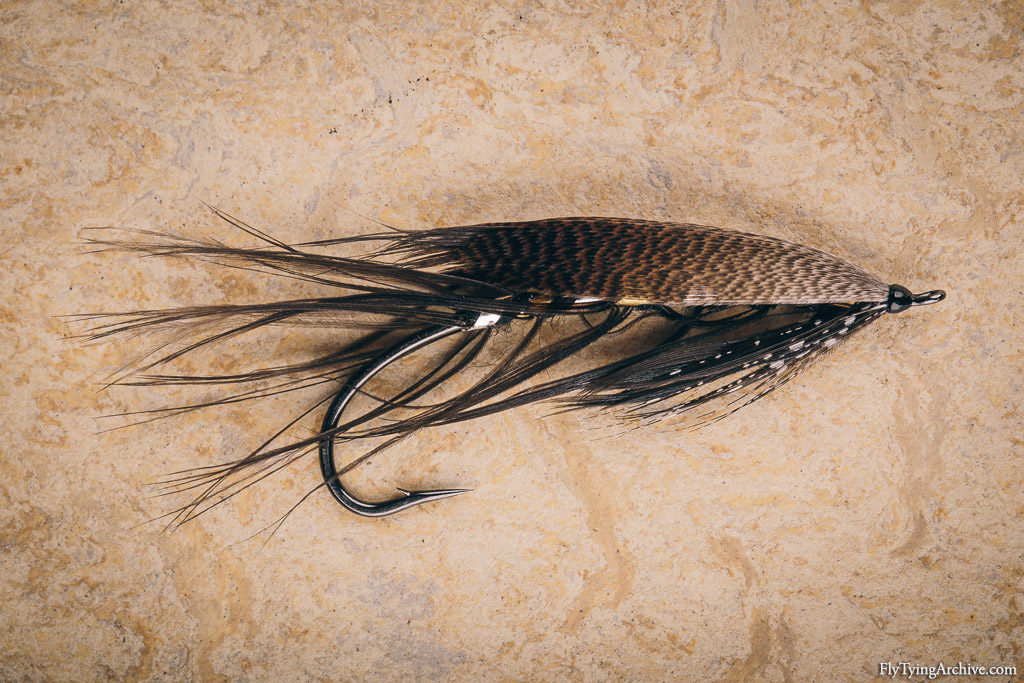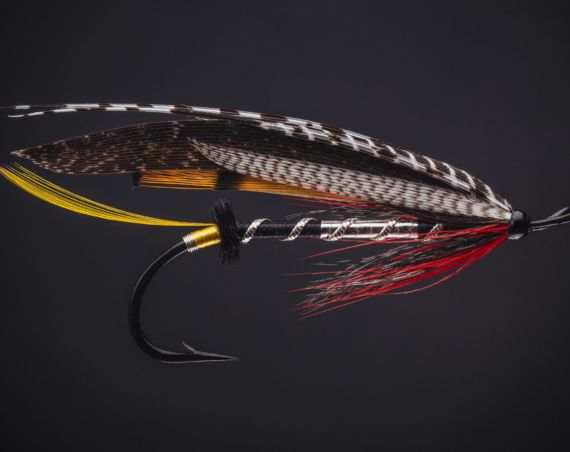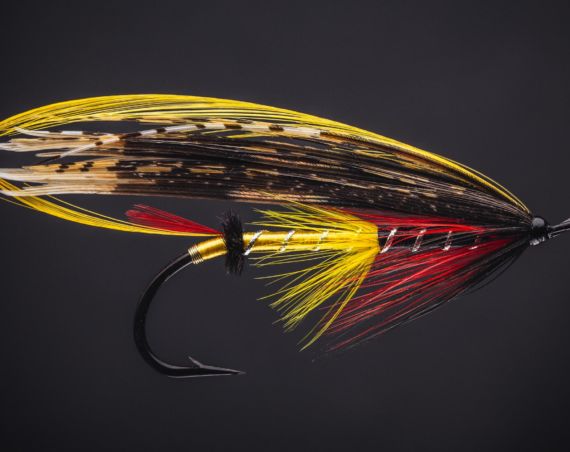Black King
We just published an article on the Pohjolan Perhokalastaja magazine on tying Speyflies in hand by Mikko Stenberg with my photos. I have held on from posting these photos of my own fly because of that article but would now like to share them. Especially the wingset is interesting and differs from most of the speys tied today. If you look at the other photo with a typical sideview of the fly it’s hardly noticeable but setting the wings this way gives the fly much more profile which aids the good movement in water. We also think this is more traditional way of doing spey wings.
Many tyers today brush the hackle underneath the fly or even pluck away the fibers from top of the fly. Especially on spey flies it will most likely turn your fly upside down in the water. If you look at the old descriptions on speyflies the wings are usually set apart like this with the hackle flowing between the wings.
Here’s the pattern from A.E. Knox’s Autumns on the Spey. I kept the original form of the pattern for you to see that they differ from book to another.
BLACK KING.– Body black. Alternate bars of gold and silver tinsel. Hackle, black cock. Shoulder hackle, guinea-fowl. Wing, mallard.






2 Comments
bob veverka
Spey flies will not swim true if they are tied to heavy on a light wire hook, the hook keels the fly, use a heavy hook on those over tied Spey patterns
Timo Kontio
Hi Bob, Appreciate you taking the time to comment. I am a big fan of your work. Maybe it doesn’t show in the photo how light the hackle is, I know it will flip it if it’s tied too heavily but I can assure you that is not the case here.
Best regards,
Timo